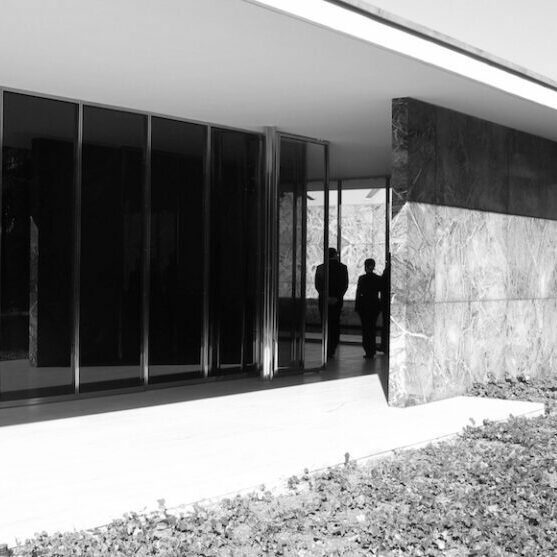Buildings inspired by metabolism. Surrealist objects. Lighting made from smartphones. We round up five of this season’s most awe-inspiring architecture and design shows from around the world. From the ubiquity of plastic in contemporary life to the darker undertones of Modernism, the scope of these exhibitions is wide-ranging and rich with innovative, forward-thinking ideas.

Plastic: Remaking our World at V&A Dundee
In 2022, scientists detected microplastics in human blood, a discovery that attests to how ubiquitous plastic has become. The quality that makes plastic so pernicious is the very same that makes it so useful: its durability. Since the 20th century, the material has been used to create everything from clothes to cars, footwear to furniture. This show uses an array of objects and displays to explore how – in the 150 years since its invention – this paradoxical material has transformed our daily lives. V&A Dundee also looks into the future to show how, for the sake of the planet, we must adapt to a plasti-lite future by replacing it with biodegradable alternatives. Until 5 February | vam.ac.uk/dundee

Objects of Desire at Design Museum, London, until 19 February
Form doesn’t follow function when it comes to Surrealist design. A lobster telephone receiver isn’t very practical, neither is a brush that trails long, thick strands of human hair. But that is exactly the point. The most recognisable Surrealist objects take everyday objects and manipulate them, putting them in unexpected combinations to bewilder and confuse. Design Museum uncovers how one of the 20th century’s most influential movements came to impact design – “questioning of the conventional and its commitment to exploring the mind, unconscious and mystical.” Objects include clothing garments, furniture, crockery and artworks from the 1920s to now. Until 19 February | designmuseum.org

EDIBLE at the Museum of Architecture, Estonia, until 20 November
Food production makes up more than a third of global carbon emissions – 37% according to a 2021 study from University of Illinois. And yet, whilst on an individual scale it might sound simple to switch your burger for falafel, widespread systemic change is less straightforward. Taking metabolism as its starting point, EDIBLE explores how we might transition into a zero-carbon world through circularity in building design. The show looks at how natural processes – such as digestion or decay – might be integrated into architecture, from “the micro-scale of materials to the macro-scale of large-scale territories and the meso-scale of habitation – the Metabolic Home.” arhitektuurimuuseum.ee

Horror in the Modernist Block at Ikon, Birmingham
Modernist architects envisioned a better world. They were driven by a utopian desire to create a society enriched by technological innovation and improved housing. Yet there is something unavoidably creepy about the buildings they left behind: shadowy concrete walkways, for example, or looming grey tower blocks. This show explores the relationship between modernism and the horror genre in film and fiction, taking Brutalist Birmingham as a jumping off point into dystopia. Audiences are introduced to 20 international contemporary artists working in a range of media, each considering how features of Modernist buildings can give rise to feelings of dread or suspense. An interesting cross-disciplinary take on design and human emotion. Until 5 March | ikon-gallery.org

The Global Life of Design at National Gallery of Victoria
Teacups, ostrich feathers and Indian muslin are amongst the 100 objects on display in this show about the hidden histories, economic networks and migratory flows behind commodities popular in Europe from the Middle Ages to the present day. “Art and design have always been shaped by the movement of people and resources,” says Tony Ellwood AM, Director of NGV. “By placing historical and contemporary objects in conversation, indeed many for the very first time, this cross-collection exhibition reveals the influence of global trade and exchange on design traditions.” Shown here is Dale Hardiman and Stephen Royce’s Open Garden: Digital Mirror, an interactive lighting design that reflects multiple images of its viewer in the repurposed screens of smartphones. Until 29 January | ngv.vic.gov.au
Words: Rachel Segal Hamilton
Image Credits:
1. Porca Miseria!, 2019 edition of 1994 design, Ingo Maurer, Steel; porcelain. Vitra Design Museum
2. Precious Plastic, Shredded Plastic, courtesy of Precious Plastic.
3. Porca Miseria!, 2019 edition of 1994 design, Ingo Maurer, Steel; porcelain. Vitra Design Museum
4. Black Almanac by Philip Maughan and Andrea Provenzano Cooking with information. Image © Philip Maughan and Andrea Provenzano
5. Maria Taniguchi, Mies 421 (2010) Single-channel video, black and white, sound 4:06 minutes Courtesy the artist and carlier | gebauer
6. Dale Hardiman and Stephen Royce, Open garden: Digital mirror, 2020. LCD panels, single board computer, camera, electrical components 65.0 × 54.2 × 32.7 cm (overall) National Gallery of Victoria, Melbourne Purchased, NGV Supporters of Contemporary Design and Architecture, 2020 © Dale Hardiman and Stephen Royce / Photo: Jonathon Griggs





